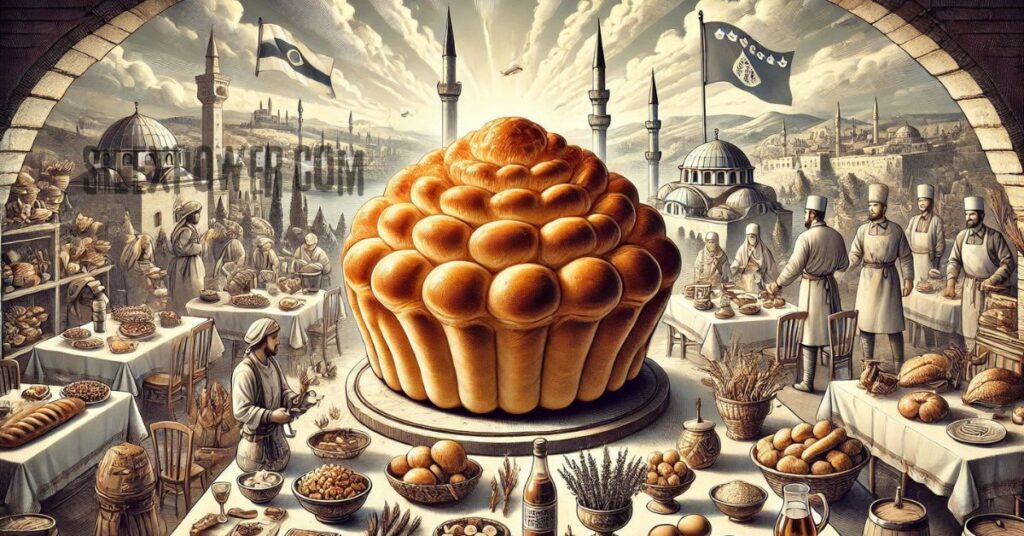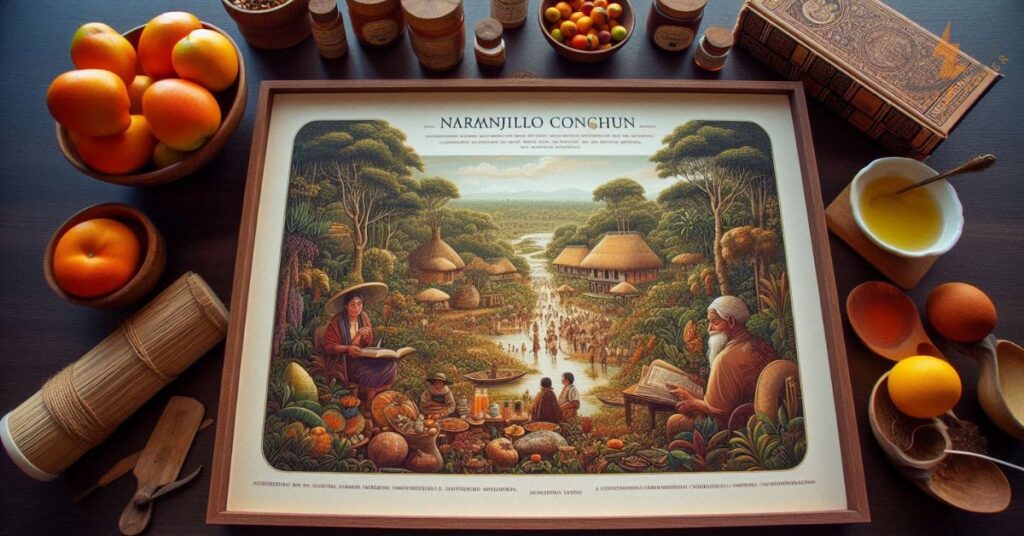Introduction
Verzaynica is more than just a bread variety; throughout the Balkans, it represents warmth, history, and culture. This delicious, fluffy bread, which is frequently made for special events, unites people and reminds them of holiday celebrations and family get-togethers. Any meal or get-together would benefit from the comforting, pillowy texture of verzaynica. Even though this bread is straightforward, it has a rich history and is influenced by several Balkan civilizations, each of which adds an own twist.
Verzaynica’s capacity to unite families and communities is its fundamental quality. The bread’s soothing texture and adaptability make it a popular treat in many homes, whether it’s shared among loved ones, paired with savory foods, or savored with a cup of coffee. This article will examine the background, components, and detailed recipe for this delectable bread. It will also analyze the bread’s cultural and traditional significance. Come along with us as we explore Verzaynica’s realm!
What is Verzaynica? A Brief History of the Bread
A traditional bread from the Balkans, verzaynica is widely consumed in nations including Serbia, Croatia, Bosnia, and Montenegro. “Verzaynica” is a reference to the bread’s distinctive preparation technique, which involves rolling it into several layers to give it a fluffy, light feel. This bread is usually prepared for special events, such as weddings, holidays, and get-togethers with the community.
The Ottoman Empire’s impact on the area is where Verzaynica got its start. Different Balkan civilizations have adapted the bread over the years by using regional ingredients and methods. Although the basic preparation is the same, there are differences based on the nation and even the household. It is now valued in both rural and urban areas as a sign of family unity in the modern world.
Ingredients: What Makes Verzaynica So Delicious?
Verzaynica’s basic ingredients are essential to producing its distinctively mild flavor and texture. Among the essential components are:
Flour: The foundation of the bread, providing structure and texture.
Yeast: Responsible for making the dough rise and creating that airy, fluffy texture.
Milk: Adds richness and moisture to the dough, contributing to its soft crumb.
Eggs: Enhance the richness and flavor, as well as providing a golden hue to the crust.
Sugar: A small amount helps activate the yeast and adds a subtle sweetness to the bread.
Salt: Balances the sweetness and enhances the flavors of the other ingredients.
Butter or Oil: Adds moisture and flavor, making the bread tender and soft.
When combined, these components make a pleasant and cozy bread. The rich flavor of Verzaynica, which distinguishes it from other kinds of bread, comes from the mix of milk, eggs, and butter.
How to Make Verzaynica: A Step-by-Step Guide
Although creating Verzaynica calls great perseverance and close attention to detail, the outcome is well worth the effort. To make your own delectable Verzaynica loaf, follow these steps:
1. Prepare the Dough
Activate the yeast first. In a saucepan, warm some milk and stir in the sugar. Add the yeast and stir until foamy, about 10 minutes.
Mix the flour, eggs, and salt in a large bowl. Pour the yeast mixture and a little melted butter or oil into the well you made in the middle. Stir the ingredients together until a sticky dough forms.
2. Knead the Dough
Place the dough onto a surface dusted with flour and knead it for approximately ten minutes. The dough should get elastic and smooth. Add a bit extra flour if it’s too sticky, but not too much.
3. First Proofing
Cover the dough with a moist cloth after putting it in a bowl that has been oiled. It should double in size after 1 to 2 hours of resting in a warm, draft-free place.
4. Shape the Dough
Punch the dough down to release the air once it has risen. Roll each portion of dough into a ball after dividing it into smaller pieces. Brush each ball with melted butter after rolling it out into a thin, round sheet.
Create several layers by piling the dough sheets on top of one another. After that, firmly roll them into a log.
5. Second Proofing
Transfer the rolled dough to a baking dish that has been oiled and cover it with a cloth once more. Give it a another hour to rise until it doubles in size.
6. Baking
Set the oven temperature to 175°C (350°F). To give the dough a golden finish, brush the top with egg wash, which is made by beating an egg with a small amount of milk.
When the bread is golden brown on top and hollow when tapped on the bottom, the Verzaynica is done. Bake it for around 35 to 40 minutes.
Let the bread cool on a wire rack after baking, then cut into slices and serve.
Verzaynica in Different Cultures: A Bread that Unites
Verzaynica bread is more than just a recipe; it is a representation of the Balkan nations’ common history. This bread is made in a variety of methods across Serbia, Bosnia, Croatia, and even portions of Hungary, depending on local ingredients and preferences. The essence of Verzaynica is the same, despite minor changes: a light, fluffy bread that unites communities and families during festivities.
While it is a mainstay during family get-togethers in Croatia, it is frequently cooked for special events like weddings or holidays in Serbia. The addition of cheese, herbs, or dried fruits varies by area. This culinary cross-border exchange demonstrates how Verzaynica is a shared cultural experience that honors unity rather than merely being a recipe.
The Science Behind Verzaynica: Understanding the Ingredients
Baking Verzaynica is an intriguing fusion of science and art. Every component is essential to the finished result. While yeast performs the miracle of fermentation, giving the dough its rise and fluff, flour serves as the bread’s structural backbone. The bread’s delicate texture is enhanced by the addition of milk and eggs, which give it a richer, softer feel.
The proofreading procedure is just as crucial. In order for the bread to rise, the yeast must have time to transform the carbohydrates into carbon dioxide. The flavor and texture improve with slower fermentation. Knowing how these components interact guarantees that each Verzaynica loaf is delicious and delightfully fluffy.
Step-by-Step Troubleshooting: Solving Common Baking Problems
When baking bread, issues might arise even for experienced bakers. These are a few typical problems and solutions:
Dough Not Rising: If your dough isn’t rising, check the temperature of the environment. Yeast needs warmth to activate. Ensure you’re using fresh yeast and that your liquids aren’t too hot or cold.
Dense Texture: If your Verzaynica turns out dense, it could be due to overmixing or under-proofing the dough. Be gentle with the dough while mixing, and make sure you let it rise enough times.
Burnt Crust: If the crust is too dark before the bread is cooked inside, lower the oven temperature slightly and bake for a longer time.
By keeping an eye out for these typical problems, you can always make the ideal Verzaynica loaf.
Why Verzaynica is the Ultimate Comfort Food
A newly made loaf of Verzaynica has a certain allure. The house is filled with the aroma of freshly baked bread, which brings back memories of holiday parties and family get-togethers. This bread’s comfortingly soft, pillowy texture makes it the ideal meal to have on a chilly day or after a demanding week.
The slow-rise process and the basic ingredients of flour, milk, eggs, and yeast combine to make a hearty bread that is flavorful without being unduly complex. It serves as a reminder that the most basic meals prepared with love and patience can occasionally be the most comforting.
Verzaynica Bread vs. Other Traditional Breads: What Sets It Apart
Verzaynica is distinguished from other breads such as pita or challah by its special combination of fluff and suppleness. Verzaynica offers the ideal harmony of texture and flavor, while pita is chewy and somewhat crunchy and challah is sweet and creamy.
The way they prepare is one of the most significant distinctions. A thorough kneading procedure and two distinct proofing periods give Verzaynica its distinctively airy texture, whilst other breads just need a small amount of kneading. Despite the time commitment, this method guarantees that each mouthful of Verzaynica is precisely risen and tender.
Baking for Special Occasions: When to Serve Verzaynica
Verzaynica is typically saved for important events. It is served at weddings and family gatherings, as well as on holidays like Christmas, Easter, and New Year’s in many Balkan homes. Because of its fluff and richness, it’s ideal for big parties when a lot of people share meals.
Serving Verzaynica during special events gives the gathering a touch of history and nostalgia. Its delicate flavor enhances the other foods when it is used with meats, stews, or cheeses. Whether it’s a birthday or a festival, baking Verzaynica adds coziness and a little bit of cultural history to the table.
Verzaynica for Beginners: Tips to Ensure a Perfect Loaf Every Time
Making bread can be intimidating for novices, but with a few pointers, you can succeed. Make sure you measure your ingredients accurately first. While too little flour can make the dough too sticky, too much flour can make the loaf heavy.
The kneading and proofing are essential to creating flawless Verzaynica. Don’t hurry through these procedures. Let the dough rise completely, and keep in mind that the second rise is equally as significant as the first. Be patient and place your dough in a warm, draft-free room to rest. The outcome will make the wait worthwhile!
Nutritional Breakdown: What’s in Your Slice of Verzaynica?
When eaten in moderation, verzaynica is a tasty delicacy that is also rather healthful. The wheat provides carbohydrates, the eggs and milk provide protein, and the egg yolk and butter provide trace amounts of fat. It’s perfect for a substantial breakfast or a satisfying snack because it’s a fantastic source of energy.
Verzaynica’s rich contents make it crucial to eat it as part of a well-rounded diet, though. You can use less butter and skim milk without significantly compromising the bread’s flavor if you’re trying to cut calories.
How to Incorporate Verzaynica into Your Everyday Meals
Verzaynica is a great addition to regular meals and isn’t only for special occasions. Serve the bread with a flavorful soup or stew so that it can absorb the depth of the broth’s tastes. With the addition of spreads, cheeses, or meats, it can also be used as a sandwich basis.
Serve it for breakfast with butter, jam, or honey for a sweeter twist. Verzaynica is a great accompaniment to practically any meal, whether it’s for breakfast, lunch, or dinner, because to its adaptability.
Verzaynica in Modern Kitchens: Adapting Tradition for the 21st Century
Modern kitchen appliances have made baking Verzaynica easier than ever. You may speed up the kneading process by using a stand mixer, and bread makers can take care of the baking and proving. If you’re a purist, though, you can still make this bread the old-fashioned way—all you need is a warm kitchen and your hands.
Verzaynica can be made more authentically while maintaining its relevance today by incorporating new techniques into old recipes. Using contemporary equipment or sticking to the old-fashioned method will always yield a lovely loaf of bread.
The Emotional Connection to Baking Verzaynica: A Personal Story
In addition to being a culinary hobby, baking Verzaynica is a means of making memories. Family get-togethers, where several generations congregate to bake and share, are often linked to this bread. It may feel like a return to the past to knead the dough, wait for it to rise, and then taste the warm bread.
Many people value the passion and work that go into creating bread more than the bread itself. Fond memories of childhood, family, and tradition are frequently evoked by the aroma of freshly baked bread. It’s a unique way to share happy moments and show your loved ones how much you care.
Verzaynica in Popular Culture: References in Media and Art
Verzaynica isn’t well-known in the world’s major media, but it does periodically appear in documentaries, movies, and books that examine Balkan culture. In Balkan myths where food plays a major role, the bread’s cultural significance is frequently emphasized. It represents friendliness, coziness, and the bond between the generations past and present.
Bread can be used in literature and art to express ideas of tradition, togetherness, and the value of shared experiences. Verzaynica is gradually becoming increasingly well-known outside of its traditional area as more people learn about the Balkans and their culinary customs.
Conclusion:
Verzaynica represents family, heritage, and cultural pride and is more than just a sort of bread. People all around the Balkans continue to rely on it for its simple ingredients and delicate, fluffy texture. For years to come, Verzaynica will be a mainstay in kitchens, whether it is prepared for special occasions or eaten with loved ones during regular meals.
In addition to savoring a tasty, home-baked treat, baking this bread provides a chance to connect with history, culture, and family. Embrace the coziness and tradition that this cherished bread offers by serving Verzaynica the next time you get together at the table.



